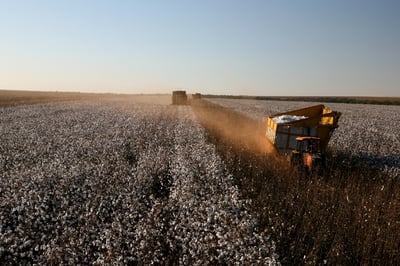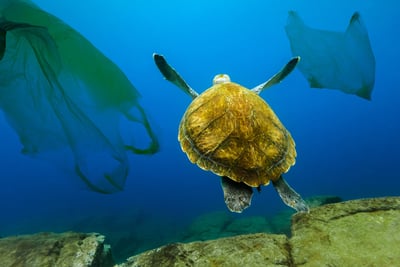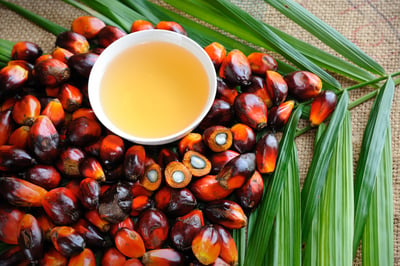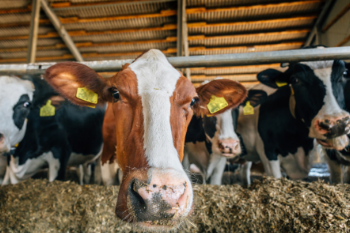TRANSPARENCY
Even in today’s world of technology, most supplier relationships are still built on trust. Whilst this can often work, trust cannot be called upon if an investigation into your business practices takes place. Technology offers solutions that offer undisputed supply chain transparency and control.
Brands and retailers can spend hundreds of thousands of pounds each year on factory audits. However, if they cannot guarantee their audited factories are the ones that make their garments, there is a risk of financial waste. To guarantee the use of compliant suppliers, companies need to map and track their downstream supply chain. Supply chain transparency and proved product provenance gives brands the knowledge and traceability required for compliance and sustainable sourcing.
COTTON
The impact of the cotton industry is far reaching, with Fairtrade Foundation estimating that up to 100 million households are directly engaged in cotton production, and that there are 200 million people in total working across the entire cotton sector. 
Approximately 10,000 litres of water is used in the production of one kilogram of cotton– this is enough to manufacture one t-shirt and one pair of jeans. An estimated 8,000 chemicals are used during the process of turning raw materials into textiles; these chemicals are then released into freshwater sources, causing pollution. The residues left over from the process can have detrimental effects on human life, including damage to reproductive systems, as well as being toxic, carcinogenic and mutagenic.
WAR ON PLASTIC
Polyester, Nylon, Rayon and Organza are amongst the most popular plastics found in textile manufacturing, with each being used according to their own unique benefits. Polyester is the most common synthetic fibre, with 76% production share in 2014. It was first used in garment manufacturing in the 1970s due to its characteristics that make it desirable for outdoor clothing. 
Plastic can be toxic and result in the disruption of hormones essential for a healthy existence. Additionally, it can attract other poisons and pollutants that exist in the natural world. The greatest danger caused by plastic production and disposal of plastic is to the oceans. There are already 500 times more pieces of microplastics in the sea than there are stars in our galaxy, and recent studies suggest that there could be more plastic than fish in the oceans by 2050.
VISCOSE
Viscose is a significant contributor to the deforestation of the world’s wooded areas. It is expected that between 2013 and 2020, the number of trees being logged every year for the production of viscose will have doubled. Whilst viscose is used in 7% of viscose clothing manufacturing due to it often being viewed as a cheaper, more durable alternative to silk – it is also used in the production of other household items such as upholstery, bedding and carpets.
During the production of viscose, wood pulp is treated with sodium hydroxide and carbon disulphide before being filtered and spun into thread. The toxics and chemicals released into the air and water during this process are highly polluting; carbon disulphide has been linked to birth defects, coronary heart disease, cancer and skin conditions of those working with the chemical and those living in the local area.
PALM OIL
Palm oil is the most widely consumed vegetable oil on the planet, contributing to about half of all packaged products sold by supermarkets. Whilst 85% of all palm oil globally produced is from Indonesia and Malaysia, it is also grown throughout Africa, Asia and Latin America. Oil palm plantations currently cover more than 27 million hectares of the Earth’s surface.
 Palm oil grows in tropical rainforests, and the uncontrolled clearing of these forests has led to widespread deforestation and extensive carbon emissions. Loss of rainforests also contributes significantly to the world’s rising greenhouse gas emissions and consequent climate change.
Palm oil grows in tropical rainforests, and the uncontrolled clearing of these forests has led to widespread deforestation and extensive carbon emissions. Loss of rainforests also contributes significantly to the world’s rising greenhouse gas emissions and consequent climate change.
DEFORESTATION
With 7.6 billion people on the planet the demand for natural resources keeps increasing,with deforestation occurring to make more land available, provide timber for manufacturing and create room for plants and factories. Forests are not just a cluster of trees for recreational use, they provide homes to 300 million humans and many different species of animal.
Trees play a critical role in absorbing the greenhouse gases that fuel global warming. Fewer forests means larger amounts of greenhouse gasses entering the atmosphere — resulting in the increased speed and severity of global warming. It is estimated that 15 percent of all greenhouse gas emissions come from deforestation.
ANIMAL AGRICULTURE
Animal Agriculture is the practice of breeding animals for the production of animal products and for recreational purposes.
The Agricultural and Horticultural Development Board (AHDB) estimates that the average UK meat consumption was around 79 kilograms per person in 2016, that is the equivalent to 527 Guadeloupean Bananas! The way in which animals are bred determines the end product - cattle are very rarely raised on an all grass provisions; they are fed a carefully formulated diet to maximise meat and milk production.
meat consumption was around 79 kilograms per person in 2016, that is the equivalent to 527 Guadeloupean Bananas! The way in which animals are bred determines the end product - cattle are very rarely raised on an all grass provisions; they are fed a carefully formulated diet to maximise meat and milk production.
Within the garment industry there are materials such as fur, wool, silk and leather that have come from animals. Recent claims suggest that the fashion industry is one of the top five most-polluting industries in the world alongside oil. 3 of the 4 worst materials for the environment, per kilogram, are derived from animals; the chemicals used to treat the materials, the tanning and dyeing processes are significantly impacting the environment.
It is important for businesses to know where the meat or the by-products that they are selling have come from, as well as whether or not it is 100% safe for human use or consumption. If a brand or retailer is found to be selling products that have been sourced unethically, from an animal that has endured cruel suffering, it is the brand itself that is going to be held accountable, which is why supply chain transparency is vital for businesses to mitigate the risk of poor consumer perception and brand image.
THE KEY POINTS
In order to gain the level of transparency required for sustainable sourcing, there must be recognition at CEO level, and a real drive throughout the whole business to work towards these discovery goals. Impacts and measures need to be reviewed and accepted in every process, and responsibility taken in achieving the standards required.
Our own high street brands must assume responsibility for their products, from the store right back to the sewing machine.
International Development Minister Alan Duncanfollowing the Rana Plaza disaster in 2013
It is essential that retailers and brands address the issue of unsustainable sourcing within their supply chain directly. Supply chain transparency – a view of the entire supply chain from raw material to end production – is key. Done successfully, this can provide retailers and brands with information regarding not only their first-tier suppliers, but all of the suppliers across and within their entire downstream supply chain.
Whilst it is essential to gather and analyse this data, working together to achieve transparency is key. Collaboration between businesses, the public, NGOs and the government will lead to greater transparency across all industries and sectors. Sharing knowledge is crucial when it comes to tackling transparency challenges.
As consumers are making more informed choices, they are also driving change in retailers and brands; after all, as soon as a business’ bottom line is affected by people choosing ethical and sustainable brands over theirs, they will be forced to listen and act.
Keep an eye out for our upcoming guide to sustainable sourcing technology.
Originally Published 06/11/2018

